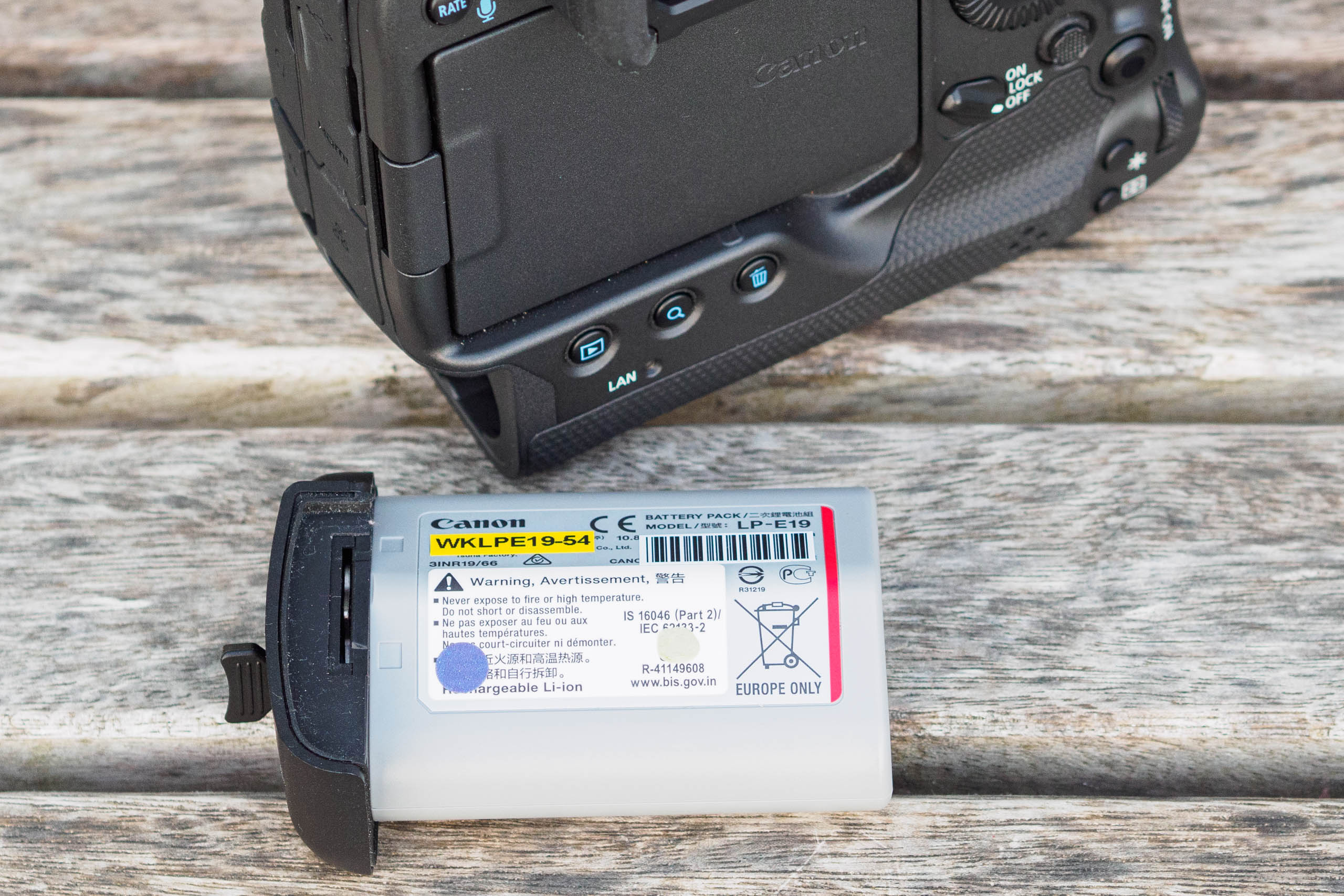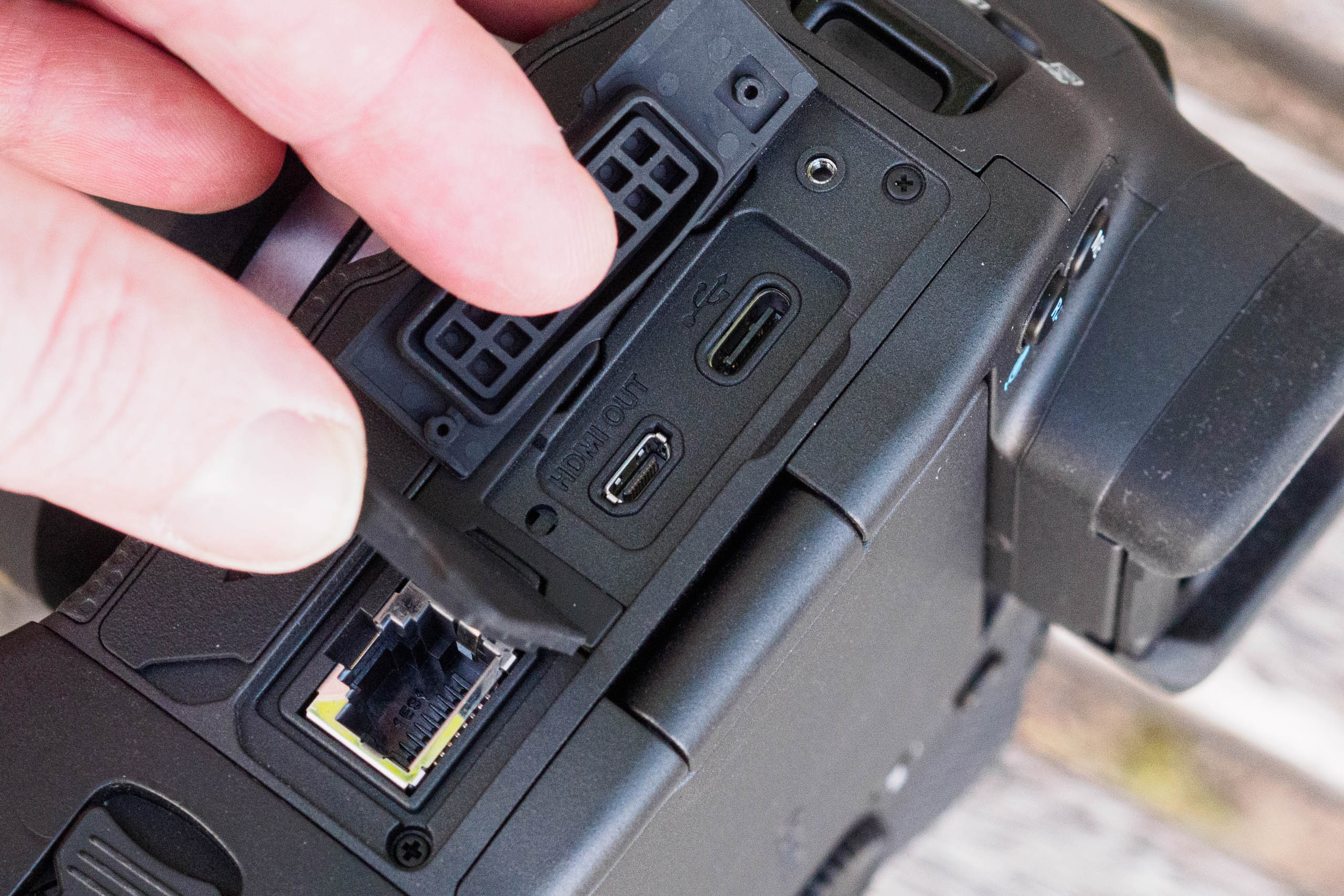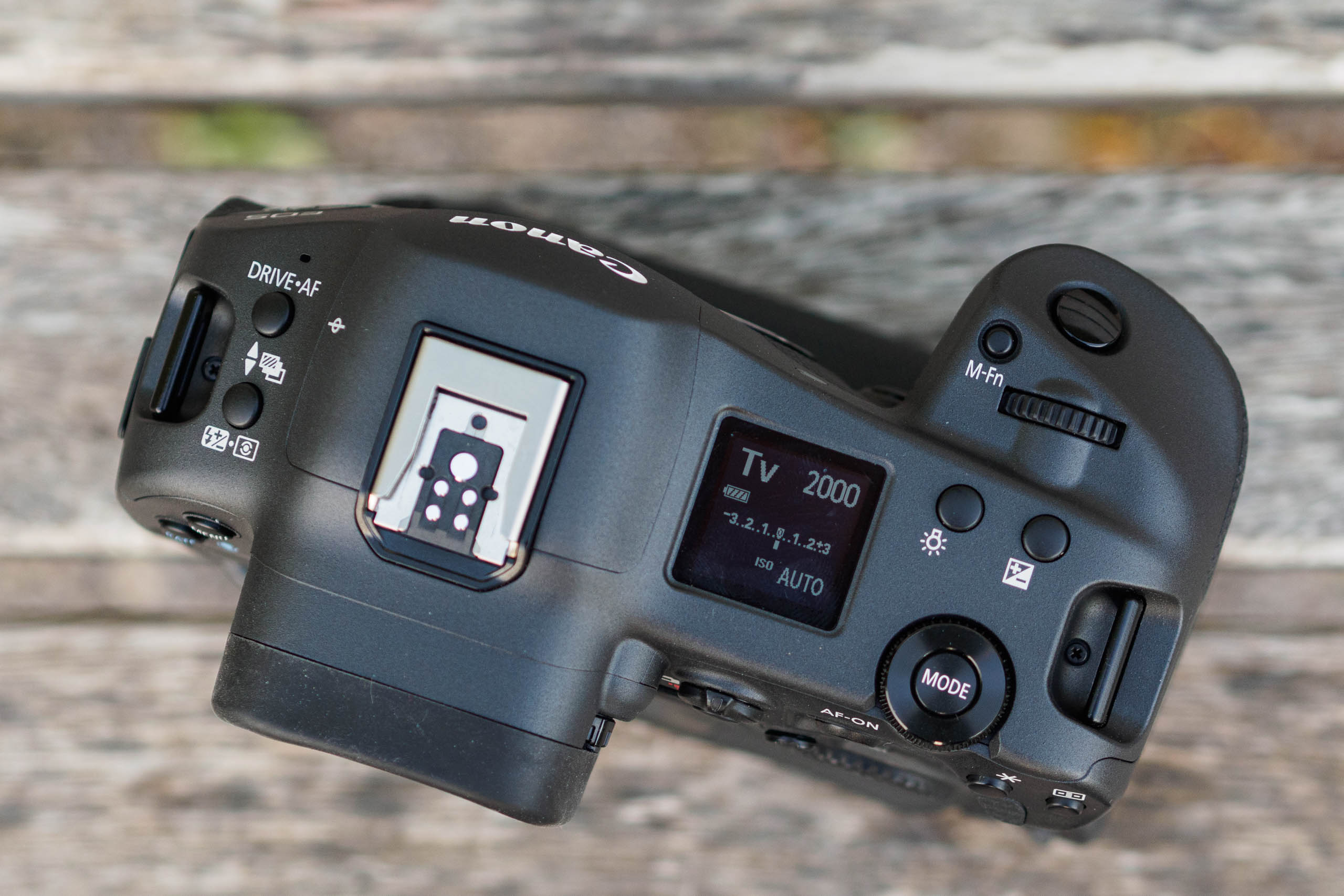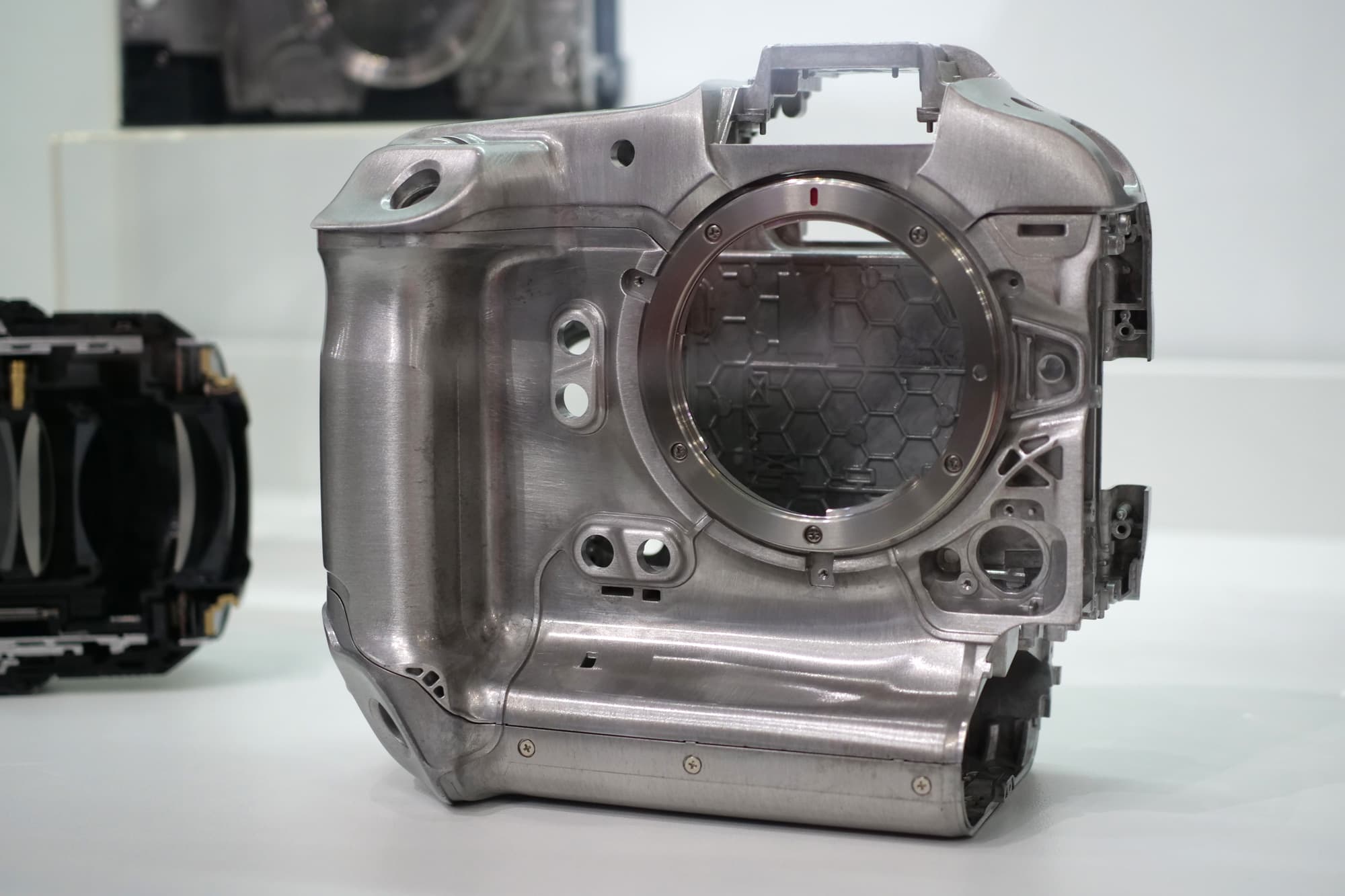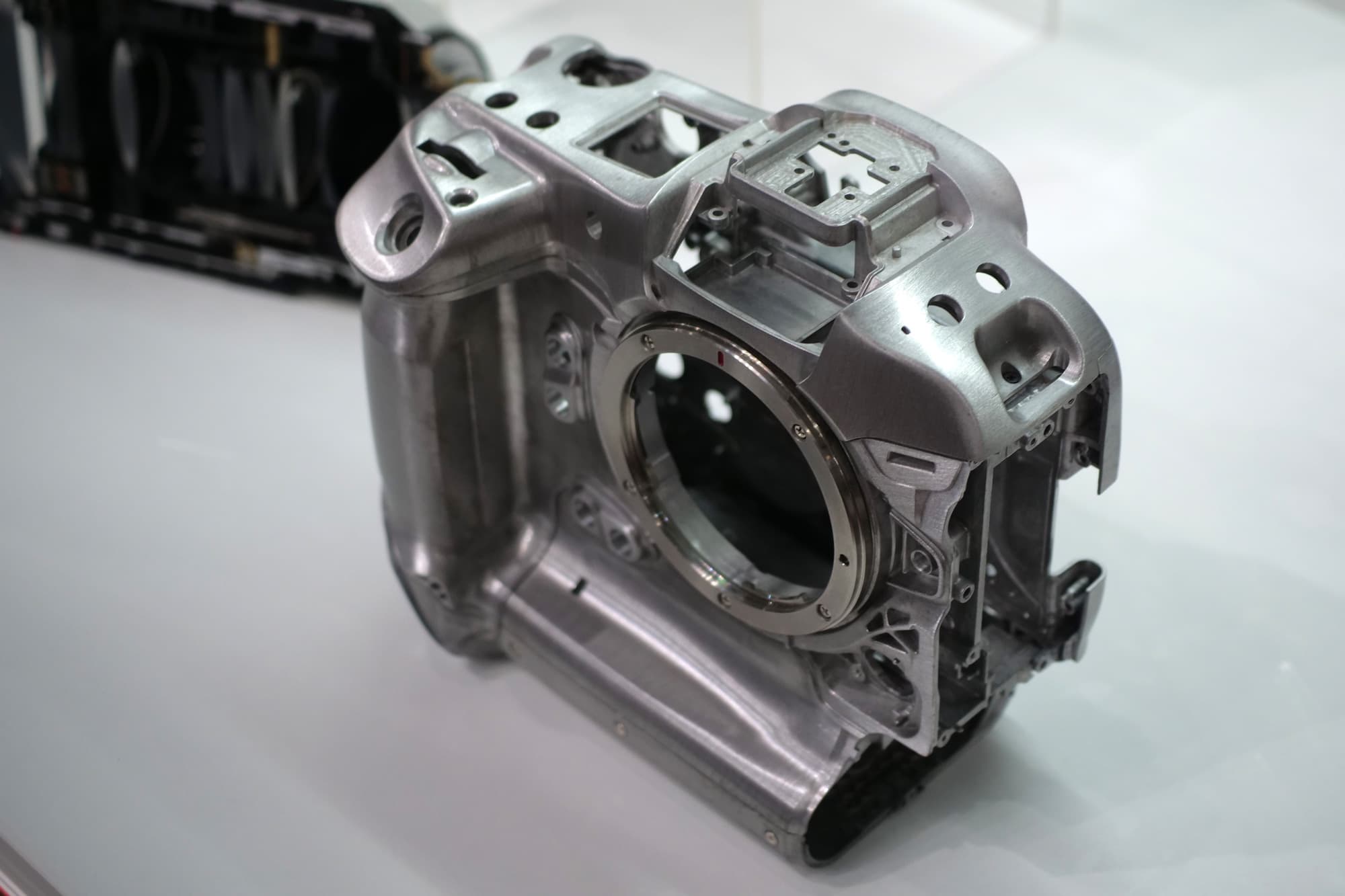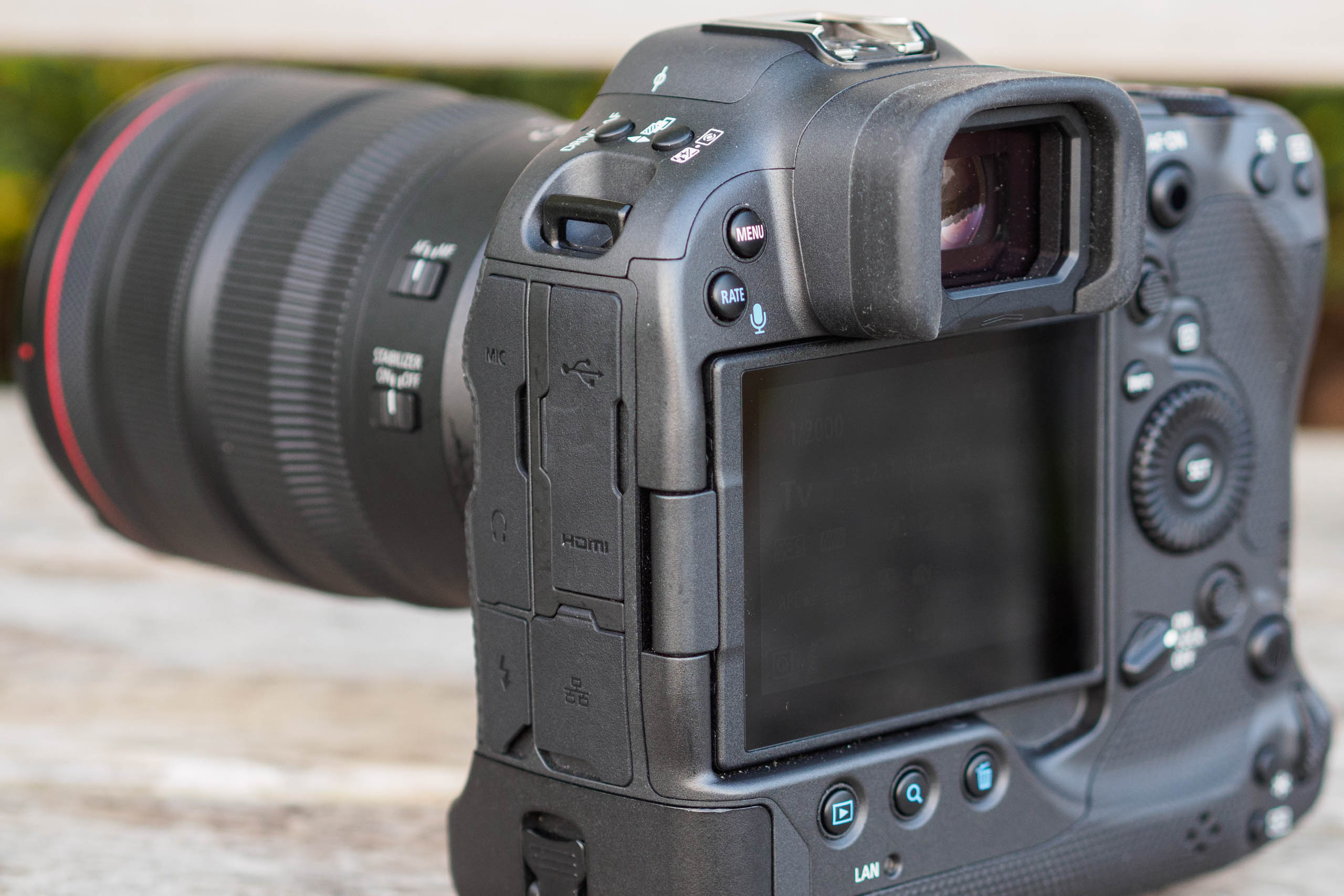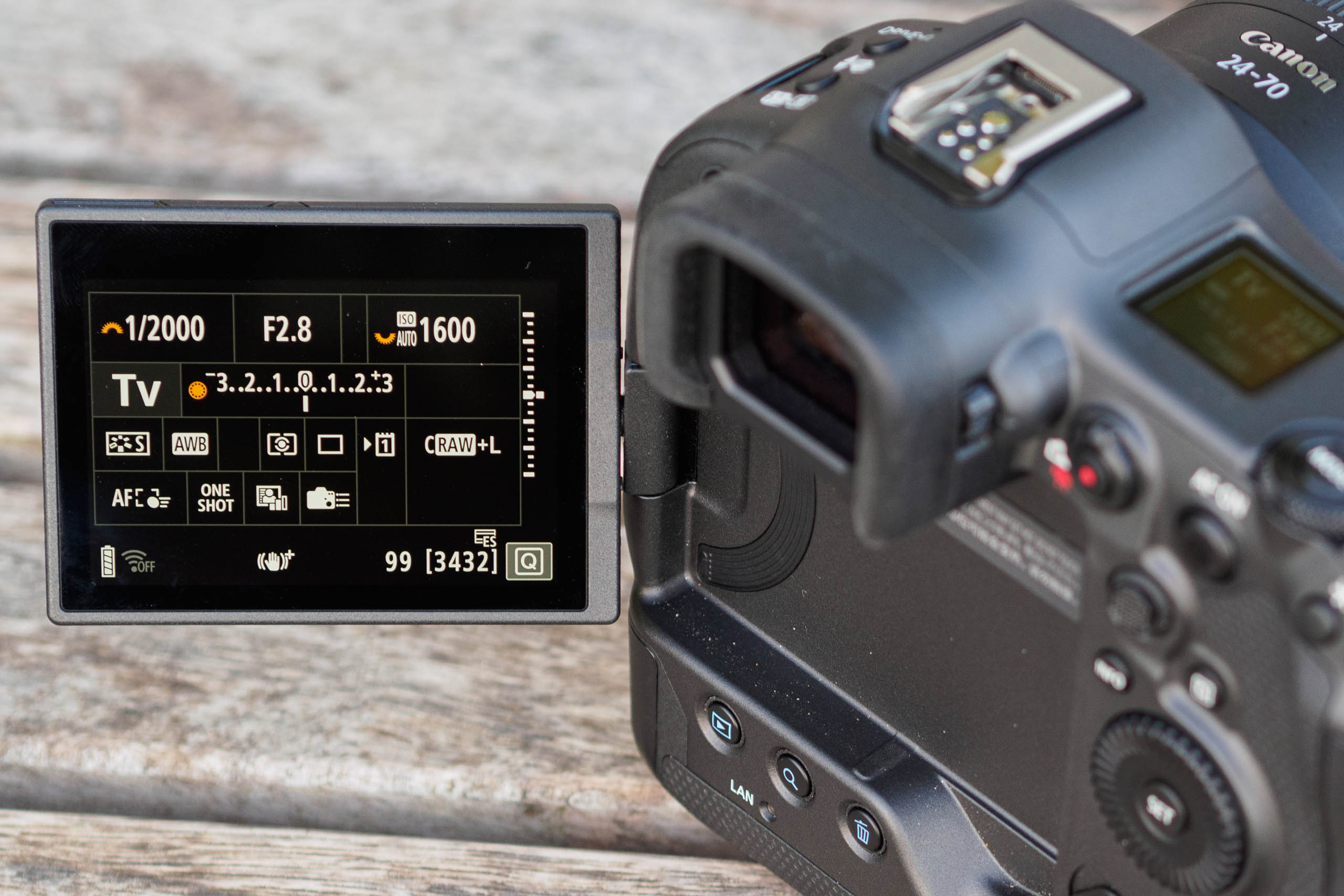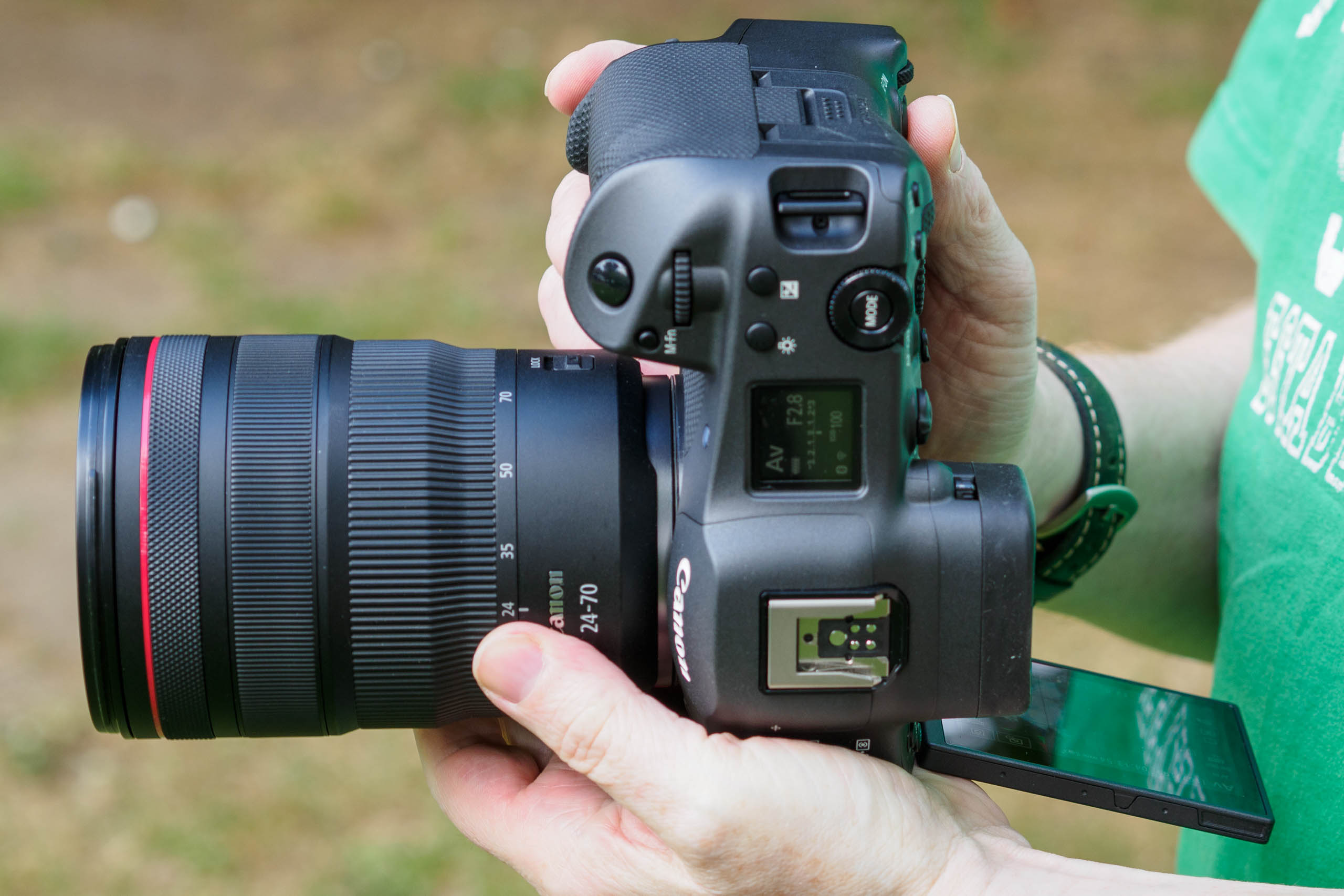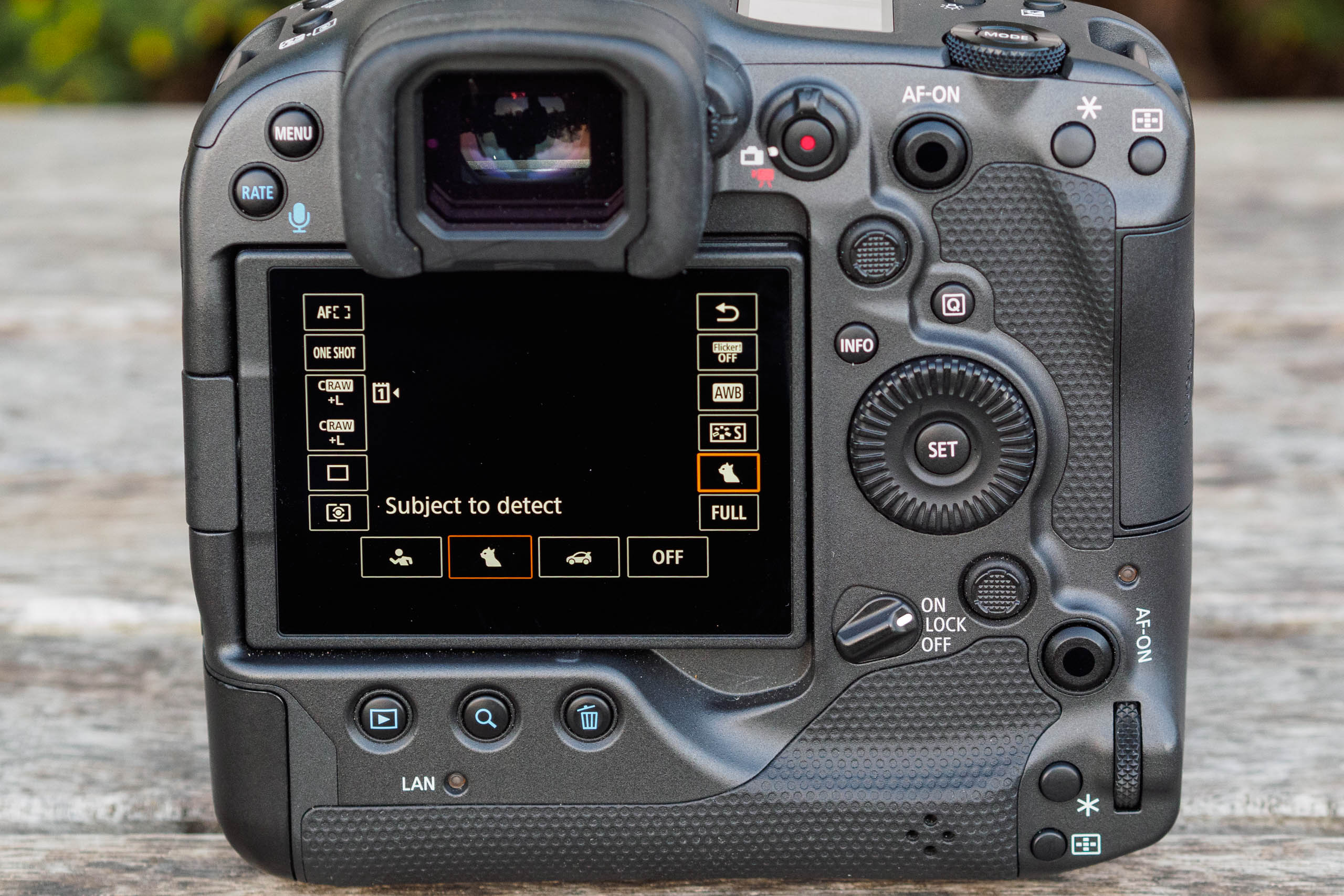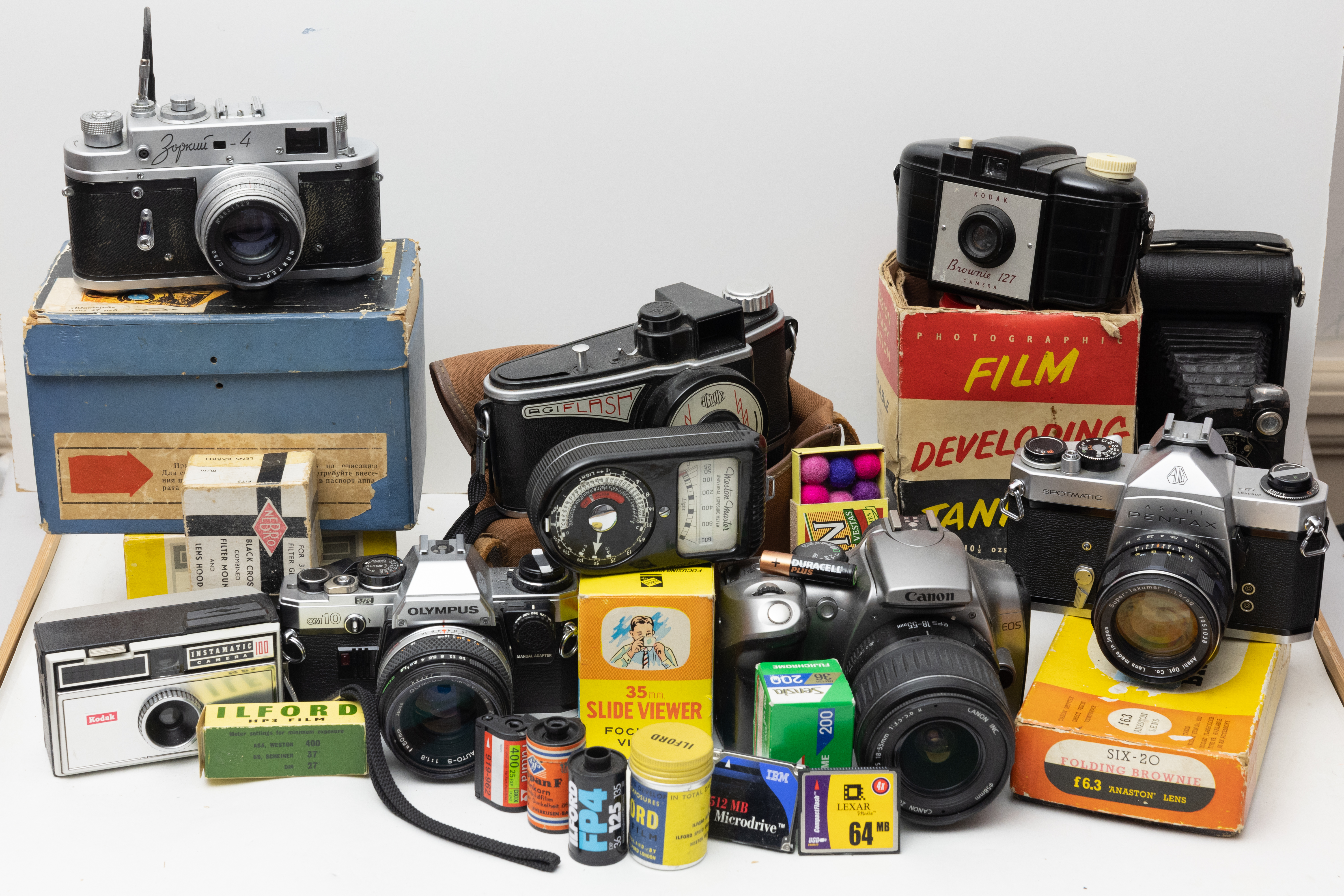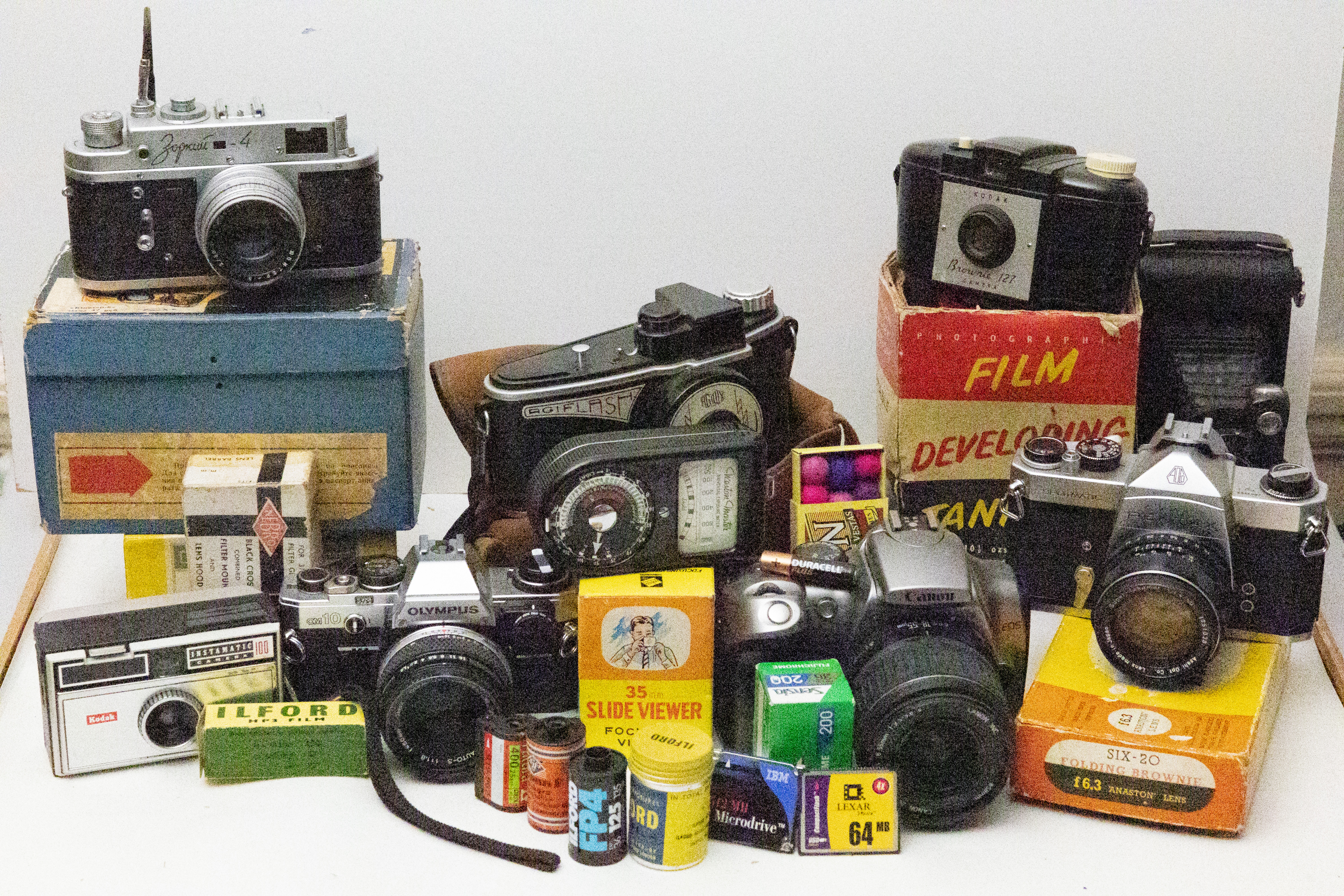Amateur Photographer verdict
A magnificent camera and a delight to use. Its ultimate speed and autofocus performance set it apart, and are strictly for the most demanding of photographers, given its price.- Incredible autofocus system
- Ground-breaking eye control focus
- Rapid continuous shooting up to 195fps (fixed AE/AF)
- 30fps with AE/AF tracking up to 420 raws
- Excellent build quality and handling
- Superb viewfinder and screen
- Works well with legacy EF-mount SLR lenses
- “Only” 24MP resolution
- Quite a large body
- Very limited third-party lens options
- Battery life compared to DSLR
The Canon EOS R3 is a super-fast, action-focused, professional full-frame mirrorless camera. The firm claimed it their fastest and most capable camera on its release in late 2021; able to shoot at 195 frames per second (with firmware v1.21) in full resolution 24MP raw. It accepts Canon RF mount lenses and can also record 6K raw video at 60 frames per second or Full HD at 240fps.
You’ll see newer models among our favourite Canon cameras now, but the EOS R3 remains an immensely impressive camera to this day.
Canon EOS R3 at a glance:
- New $3,999 / £4,699 body only
- Canon RF mount
- 24.1MP CMOS stacked back-illuminated sensor
- DIGIC X processing engine
- ISO 100-102,400 (expandable to ISO 100-204,800)
- 5-axis in-body image stabilisation
- 30fps continuous shooting with AE/AF tracking (12fps with mechanical shutter)
- 195fps with fixed AE/AF
- Top 1/64,000sec with electronic shutter, 1/8000sec with mechanical shutter
- 6K 60p raw, UHD 4K 120fps, FullHD 240fps
- Dual card slots (CFexpress type B and UHS-II SD slots)
- Weather-sealed body
- Canon LP-E19 battery
The Canon EOS R3 was first revealed as ‘under development’ in April 2021 and was finally added to Canon’s ever-evolving EOS R lineup that September. Take up of the camera was initially so good, many photographers found it difficult to get their hands on one. Today, the EOS R3 is available in most reputable camera stores and online, with excellent condition used examples fetching around $3,400 / £3,900. Hire prices, such as those offered by Hireacamera, typically start from around $170 / £150 per day or for a weekend.
Eye-control focus is back
Arguably, the EOS R3’s most exciting feature is a new twist on an old Canon technology, eye-control focus. This means the camera can detect what the user is looking at in the viewfinder, and then autofocus on it. This futuristic-sounding feature was found on several of the firm’s film SLRs in the 1990s, but the big difference lies in the way it now works in concert with subject recognition technology.
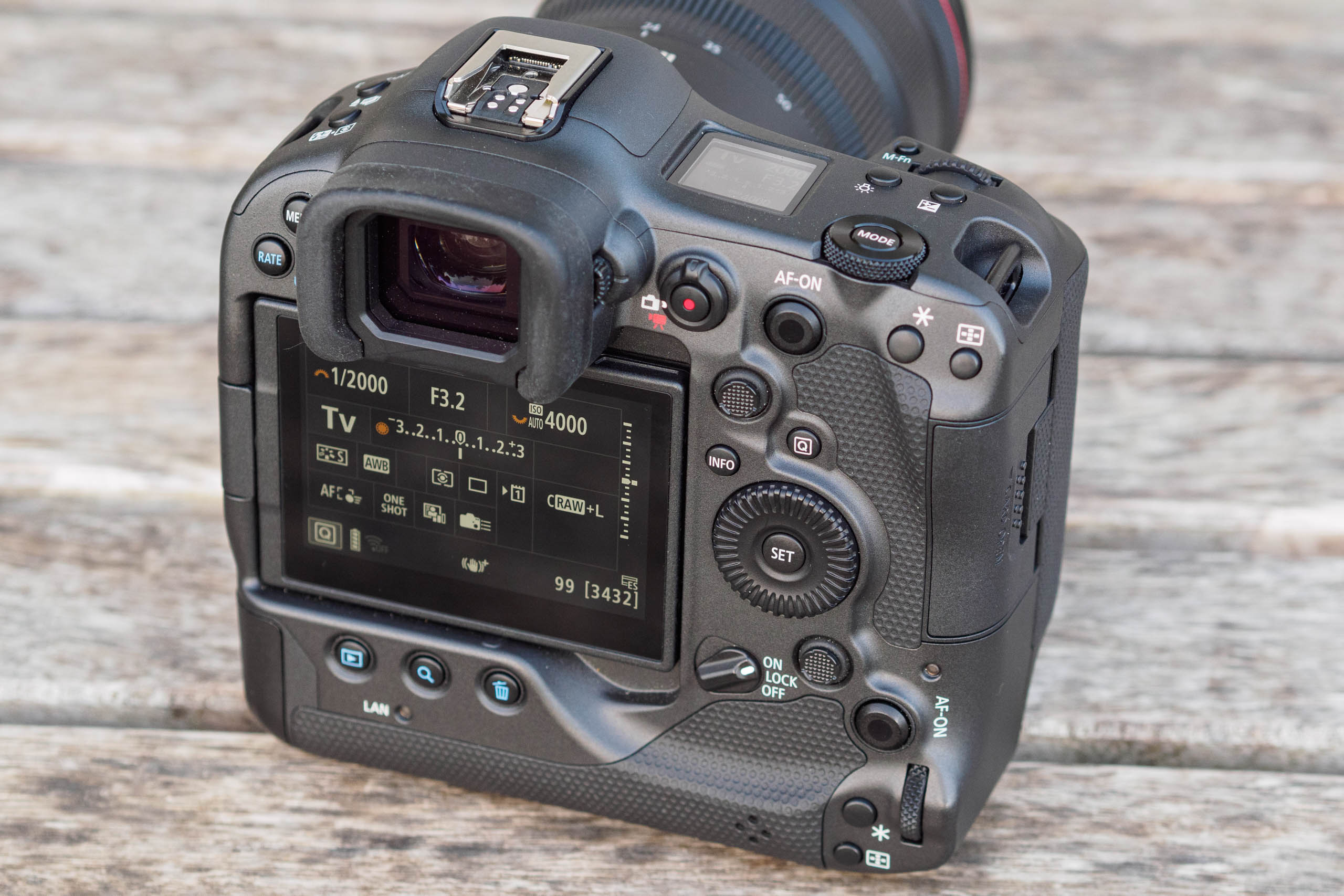
With a body-only price of $4,000 / £4,700, the EOS R3 isn’t aimed at the average enthusiast. There are other excellent full-frame cameras available for those looking for a more reasonably priced version.
As its price suggests, the EOS R3 is designed for professional sports and news photographers who demand speed and reliability along with rugged build and intuitive operation. At this price, it exists in the same rarefied space in the pro market as the Sony Alpha 1 and Nikon Z 9. It’s perhaps less of an all-rounder than these other two big-hitters, but its remarkable speed and autofocus system make it extremely impressive, nonetheless.
Features
Canon has built the EOS R3 around an all-new 24.1MP full-frame stacked CMOS sensor, which offers a standard sensitivity range of ISO 100-102,400 that’s expandable to ISO 50-204,800. The stacked architecture brings remarkable speed, including a world-record top shutter speed of 1/64,000sec, and the ability to combine flash with the silent electronic shutter at a sync speed of 1/180sec. The shutter lag is just 20ms, which is so short that Canon offers a menu option to lengthen it to match its DSLRs.
That headline top shooting speed of 30fps with AE/AF tracking and full resolution files is achieved using the electronic shutter, with a buffer of 150 14-bit raw files. The top shooting speed has increased up to 195fps with fixed AE/AF up to 50 frames with firmware update v1.21. Switch to the mechanical shutter and the speed drops to a still-impressive 12fps, but now with a vast 1000-shot raw buffer. Canon also claims that image distortion due to rolling shutter effects is almost completely eliminated, while flicker suppression is able to combat colour banding effects under LED lighting.
Resolution
Canon’s choice of 24MP resolution stands in contrast to the Sony Alpha 1 and Nikon Z 9, which employ 50MP and 45MP sensors respectively. But the firm believes this provides the ideal balance between image quality and file size for pro shooters who need to be able to transmit files back to their news desks as quickly as possible. Let’s not forget that the EOS R5 already offers 45MP at 20fps for those who want both speed and resolution.
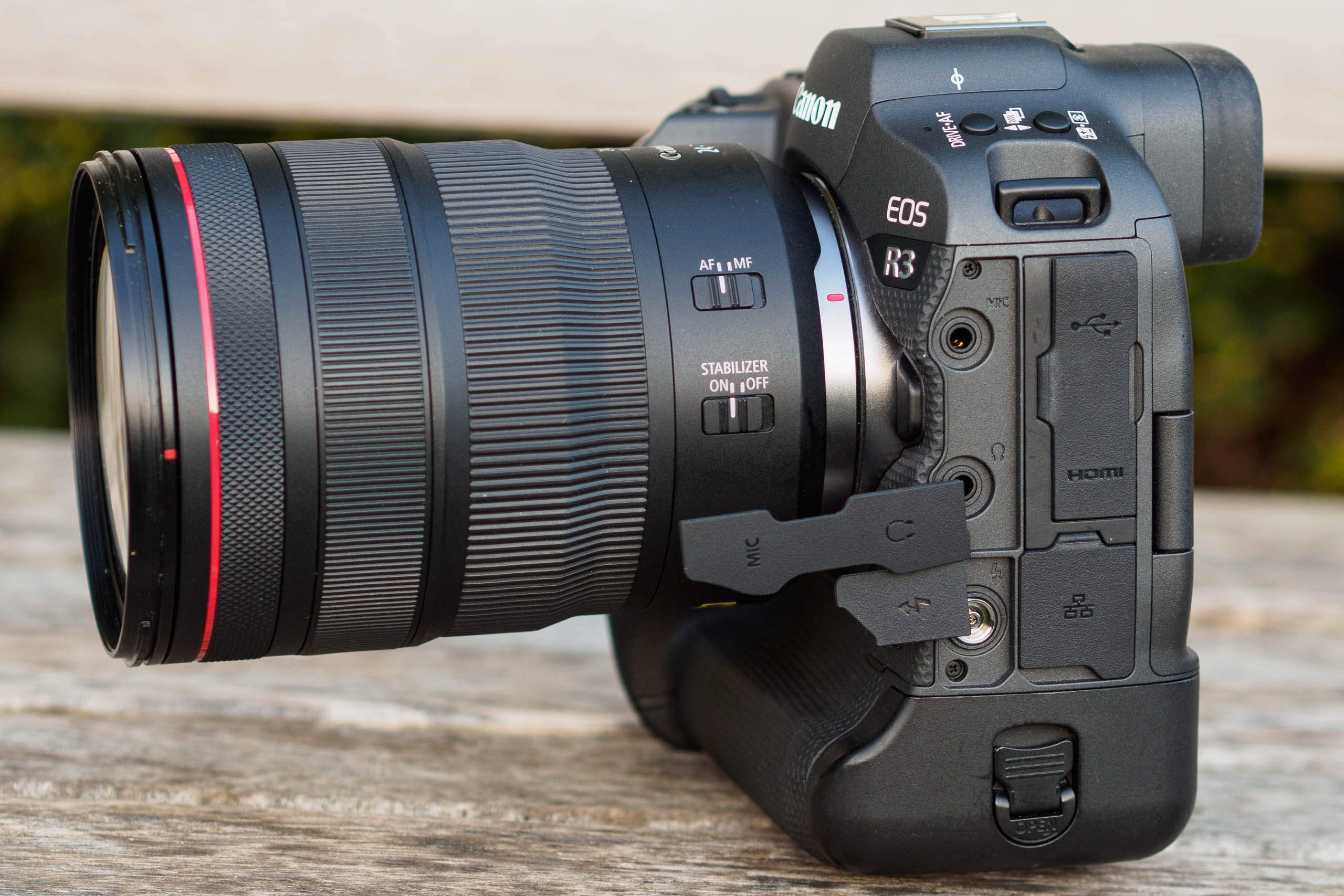
Autofocus is based on Canon’s Dual Pixel CMOS AF II technology, where every sensor pixel is split in two to enable phase detection anywhere in the frame. No fewer than 4779 focus points are available, and the system is specified to operate in incredibly low light levels equating to -7.5EV with an f/1.2 lens. Canon also updated its subject recognition system, so it’s capable of recognising vehicles such as cars and motorbikes for motorsports photography, in addition to humans and animals. A detailed AF settings menu includes an array of Servo AF presets to deal with different scenarios, much like on the EOS-1D X Mark III pro sports DSLR.
Eye Control AF
The really big news, though, was Canon’s re-introduction of Eye Control AF. This employs an array of infrared LEDs to determine where you’re looking in the viewfinder, which is indicated by a circular blue cursor. The camera then uses this information to select a subject for tracking when the shutter button is held half-pressed. The system must be calibrated to each individual photographer’s eye, but thankfully, this is a straightforward process.
Firmware update v1.21 enhanced the EOS R3’s focus skills further with focus bracketing and in-camera merging of the multi-shot sequence now possible. The feature gives an accurate on-location preview of what can be achieved with the sequence later when back in front of the computer.
In-body image stabilisation
As is becoming increasingly standard, 5-axis in-body image stabilisation (IBIS) is built in. This works together with optically stabilised lenses to provide up to 8 stops of stabilisation, according to CIPA standard ratings. There’s no IBIS-based high-resolution multi-shot mode, but given the camera’s target audience, that’s no great surprise (nor loss).
Two card slots are provided for recording files: one accepts super-fast CFexpress type B media, while the other takes more affordable UHS-II SD cards. You can use them at the same time in backup mode, sequentially, or record different file types to each. It’s good that Canon doesn’t force you into only using expensive CFexpress cards, but the flipside is that if you want to use the two slots in backup mode, you’ll be limited by the speed of the SD.
Battery stamina
Power is provided by the same chunky LP-E19 battery as used by the EOS-1D X Mark III DSLR. It slots into the vertical grip and is rated for 860 shots using the LCD, or 620 with the EVF. This may sound low compared to a pro DSLR, but in reality, you can get many times more when shooting high-speed bursts using the electronic shutter.
Pro-level connectivity is included for rapid file transfer, including 5GHz Wi-Fi, Bluetooth 5.0, and a built-in Gigabit Ethernet port. The EOS R3 is compatible with both Canon’s Camera Connect app, and a new Mobile File Transfer app for sending files to an FTP server via mobile networks, which could be an invaluable tool for news shooters. For this purpose, the camera is MFI certified to support wired connection to an iPhone.
Video features
Video recording capabilities are just as impressive as for stills. The EOS R3 can record 6K raw at up to 60fps; DCI 4K at up to 60fps; and 4K UHD at up to 120fps. Firmware update v1.21 has added the ability to shoot FullHD at 240fps. Canon promises up to 6 hours of video capture, raw video can be recorded internally, and both Canon Log 3 and PDR HQ are available for extended dynamic range. Conventional 3.5mm stereo microphone and headphone sockets are built in, but slightly disappointingly, the HDMI port isn’t full-size.
Canon has also included a new multi-function hot shoe that allows wireless connection of a microphone, with the ability both to accept a digital audio input and to supply power to the connected device. This works with Canon’s DM-E1D directional stereo microphone ($200 / £259) and the Tascam CA-XLR2d-C adapter ($399 / £349) that enables connection of two XLR microphones. There’s also a remarkably small ST-E10 off-camera radio flash controller which costs $119 / £159, and an AD-E1 hot shoe adapter ($40 / £59) that’s required to maintain weather sealing with Canon’s existing Speedlites.
Key features
- Sensor shield: The shutter closes when the camera is switched off, protecting the sensor from dust during lens changes. Canon also runs a sensor-cleaning cycle every time you change lenses
- Storage: Canon has included a conventional UHS-II SD card slot alongside a high-speed CFexpress B slot. You can use them simultaneously or sequentially, or record different file types to each. For the fastest burst sequences you’ll need to use CFexpress B cards.
- Power: Canon has used the same LP-E19 battery as in the EOS-1D X Mark III DSLR, which is rated for 860 shots using the LCD and 620 with the EVF. In practice, it’ll often deliver many times more than that
- Connectors: On the side you’ll find headphone, microphone, micro HDMI, USB-C and ethernet sockets. There’s a connector for Canon’s RS-80N3 cable release on the front
- Top-plate display: A small LCD panel on the top displays essential shooting information at a glance, including exposure mode, shutter speed, aperture, ISO and exposure compensation
- Connectivity: Pro-level connectivity is included for rapid file transfer, including 5GHz Wi-Fi, Bluetooth 5.0, and a built-in Gigabit Ethernet port. A new Mobile File Transfer app allows files to be sent to an FTP server via mobile networks
Build and Handling
One area where the EOS R3 stands out is with regards to its handling. It has a similar design to the EOS-1D X Mark III pro DSLR, with an integrated vertical grip for portrait-format shooting. Being mirrorless, it’s rather smaller and lighter, although it still weighs in at over a kilogram. As usual with a pro camera, its body is covered with buttons and dials that give fingertip access to the most important settings, with the key shooting controls replicated across the two grips.
In your hand, the weather-sealed magnesium alloy body provides the same kind of robust, bomb-proof feel as its DSLR cousin, while the distinctively textured rubberised coating offers excellent grip. However, Canon says it’s not quite built to 1D standards, which is why it gets the ‘R3’ moniker. Given that Nikon’s Z 9 offers top-spec build for less money, this feels like a slight let-down, but the EOS R3 is noticeably less heavy in return.
Control layout
The control layout of the EOS R3 closely resembles that of the EOS-1D X Mark III: you get Canon’s familiar electronic dials behind the shutter button and on the back for changing exposure settings, along with a joystick for setting the focus point, and a large AF-ON button beneath your thumb. But the R3 also benefits from Canon’s latest design thinking, including an extra control dial under your thumb that’s used to change the ISO. Like on the EOS R5 and EOS R6 II, this dial can be used to shift the ISO setting temporarily when Auto ISO is engaged, which can be really useful.
With the EOS R3’s raison d’être being its sophisticated autofocus system, many of the buttons are given over to controlling it; removing the need to dive into menus. Press the AF area selection button on the shoulder, and you can cycle through AF area modes via the small M-Fn button beside the shutter release. A button on the front turns subject tracking on and off, while the Set button in the centre of the rear dial toggles eye control focus.
Smart controllers
As on the EOS-1D X Mark III, the AF-ON buttons double up as ‘smart controllers’, allowing you to move the focus area by dragging your thumb across their surface. It’s all extremely well thought-out and impressively quick to use, especially when compared to the Sony Alpha 1.

Pretty much every physical control is customisable to suit your preferences, and you can also save up to three custom exposure modes for different shooting scenarios. Inexplicably, though, if you save camera settings to the C2 or C3 slots and then attempt to recall them, you’ll find they’re greyed out and inaccessible. It turns out you have to enable them separately in the menu, which makes no sense.
Intuitive interface
As usual for Canon, the entire user interface, including the main menus, can also be operated quickly and easily using the touchscreen. Here the onscreen Q menu provides an alternative means of changing many of the major settings, without lots of button-pressing. Notably, this is the easiest way of switching the subject recognition system between people, animals and vehicles, or turning it off completely.
A look inside the Canon EOS R3
On display at The Photography Show 2021, Canon showed the internal construction of the Canon EOS R3, and the tough looking magnesium alloy shell:
Viewfinder and screen
The EOS R3 is equipped with a 5.76m-dot viewfinder that offers 0.76x magnification and a choice of 60fps or 120fps refresh rate. It also provides a blackout-free view in burst mode, with a flickering frame around the edge providing visual feedback during continuous shooting.
The eyepiece is surrounded by a vast eye cup whose primary function is clearly to maximise the effectiveness of the eye control function. But it also does a great job of blocking out most peripheral light, making the viewfinder particularly easy to see in bright conditions.
Display modes
You can overlay lots of useful additional information in the viewfinder display, including gridlines, levels, and an RGB histogram. Pressing the Info button cycles through display modes, allowing you to switch easily to a clean, uncluttered view.
By default, Canon previews colour and exposure, but not depth-of-field; instead, this is done the old-fashioned way, by pressing a button on the front of the body. However, a full-time depth-of-field preview option is available in the menu if you prefer. There’s also an opaquely named ‘OVF sim. view assist’ option that aims to mimic the experience of using an optical viewfinder, which can be handy in high contrast conditions. Unfortunately, it can’t be toggled on and off using a function button.
On the back you get a stunning 3.2in, 4.2m-dot fully articulated touchscreen, which can be set to face in almost any direction for shooting at awkward or unusual angles. It can also be turned inwards against the body for protection against splashes or scratches. It’s perhaps not as quick and easy to reposition as the Nikon Z 9’s 3-way tilting screen, but it’s vastly better than the Sony Alpha 1’s unit, which only tilts up and down.
Autofocus
The EOS R3’s AF system is phenomenally capable, once you get the hang of it. Naturally, it’ll focus on static subjects in an instant and with unerring accuracy. But the real magic happens when you start shooting moving subjects, where the combination of subject recognition and eye control gives an experience unlike any other camera. I got an impressively high proportion of in-focus ‘keepers’, and not just with high-end telezooms such as the RF 70-200mm f/2.8L IS USM, but also with the relatively small and affordable RF 600mm f/11 IS STM and RF 800mm f/11 IS STM primes. For more options have a look at the Best Canon RF lenses for wildlife photography.
Selecting AF area size
You can choose practically any AF area size from a small spot to the entire frame, including three flexible zone settings where you can define the AF frame’s height and width. This is particularly useful if you know your subject will only appear within a defined area, such as a cars or runners on a racetrack. When there are multiple possible subjects, the ability to choose between them just by looking at one on the viewfinder is incredible. After a while, it becomes such an intuitive way of shooting that you almost forget it’s even happening.
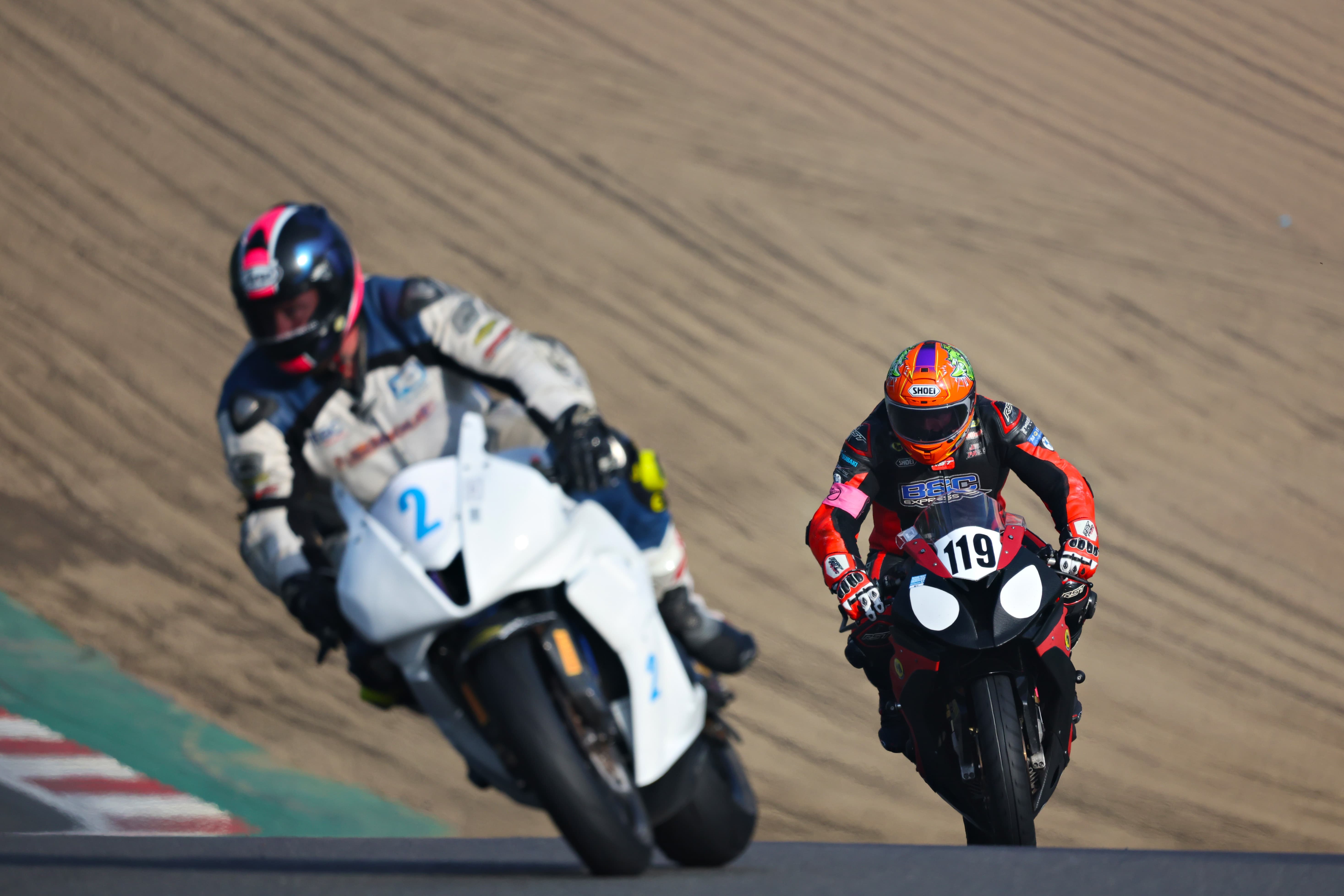
Canon’s subject recognition is likewise extremely impressive. It’s uncanny how the AF system can recognise the requisite type of subject instantly, and then track it as it moves around the frame. Even if you’re looking at an animal that’s distant and small in the frame, chances are the camera will pick out and focus specifically on its head or even eye.

AF in low light
I was also impressed by how staggeringly well the AF system works in low light. In fact, it continues to recognise and track subjects in conditions where it’s almost too dark to even see, let alone take pictures. I watched mandarin ducks and a heron foraging in a shaded pond well after dusk, in light so low that it required ISO 51,200 at least, and the camera was still reliably tracking and focusing on their eyes.
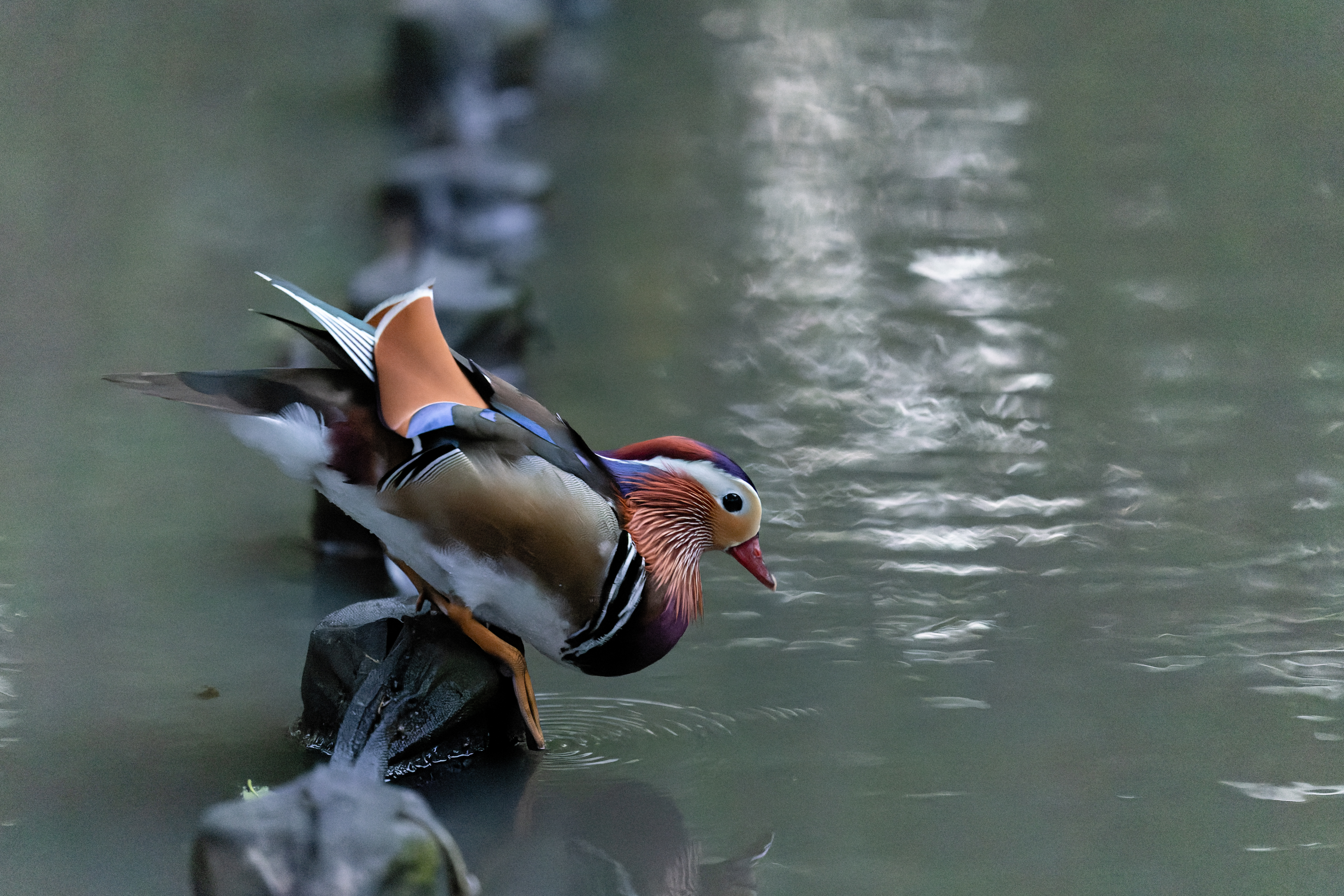
Naturally, the autofocus system isn’t perfect, either with regards to subject recognition or eye control. For example, it’ll pick up planes when set to detect animals, as they look quite like birds. And while eye control works brilliantly in many situations, I found it’s not so great with subjects such as birds in flight that move quickly and erratically, so you don’t know where to look in the viewfinder. In such cases, the conventional wide AF area settings tend to be a better choice. But this is where I really appreciated how easy Canon makes it to change settings quickly to suit different situations.
Performance
With the EOS R3 essentially expected to take on the same kind of jobs as pro DSLRs, it needs to perform to the same standard. In almost every respect, it does. It starts up pretty much instantly when you flick the power switch, and then responds instantly to all the controls. It’s just as snappy when you’re using the touchscreen as the physical controls. However it does take a moment to wake up from its standby mode, so it’s worth getting into the habit of half-pressing the shutter button as you raise it to your eye.

While the mechanical shutter is quiet and unobtrusive, the electronic shutter is completely silent, although you can add a sound. I couldn’t find any significant disadvantage with using the electronic shutter, either; there’s neither rolling shutter distortion, nor banding under artificial lighting. It seems Canon could have left out the mechanical shutter completely, like Nikon did with the Z 9.
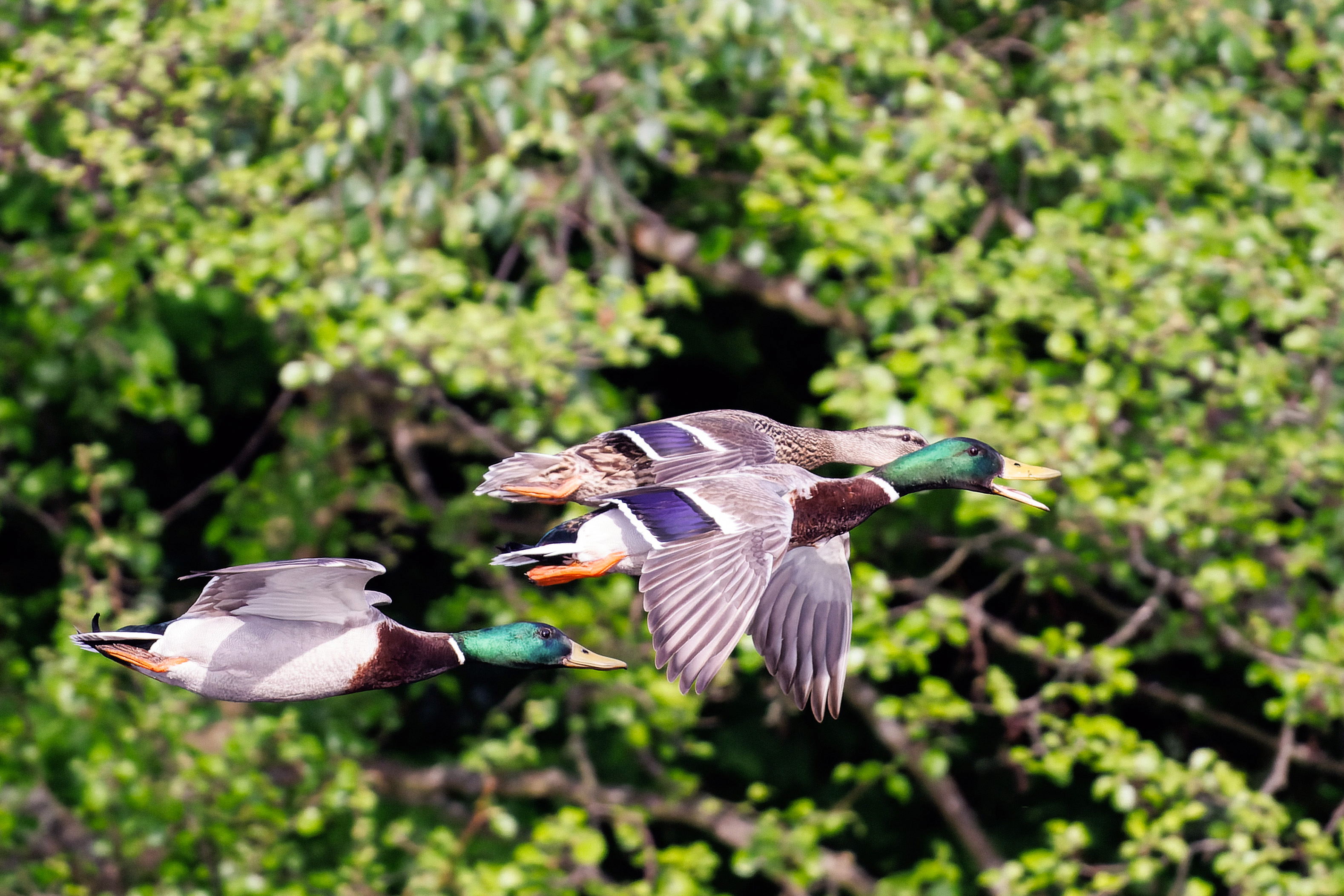
Buffer performance
As the specs suggest, the EOS R3’s continuous shooting capability is impressive. In my tests, it matches Canon’s specified 30 frames per second for 150 frames in raw. However, if you switch to the cRAW format, which gives smaller files, the buffer practically doubles to about 300 frames. Drop the shooting speed to 15fps, and it’ll keep on going indefinitely (or at least, until your memory cards fill up).
Canon has improved the EOS R3’s continuous shooting speed further in firmware v1.21. This update makes it possible to shoot up to 50 full resolution Raws, HEIFs and JPEGs at the remarkable continuous shooting rate of up to 195fps.
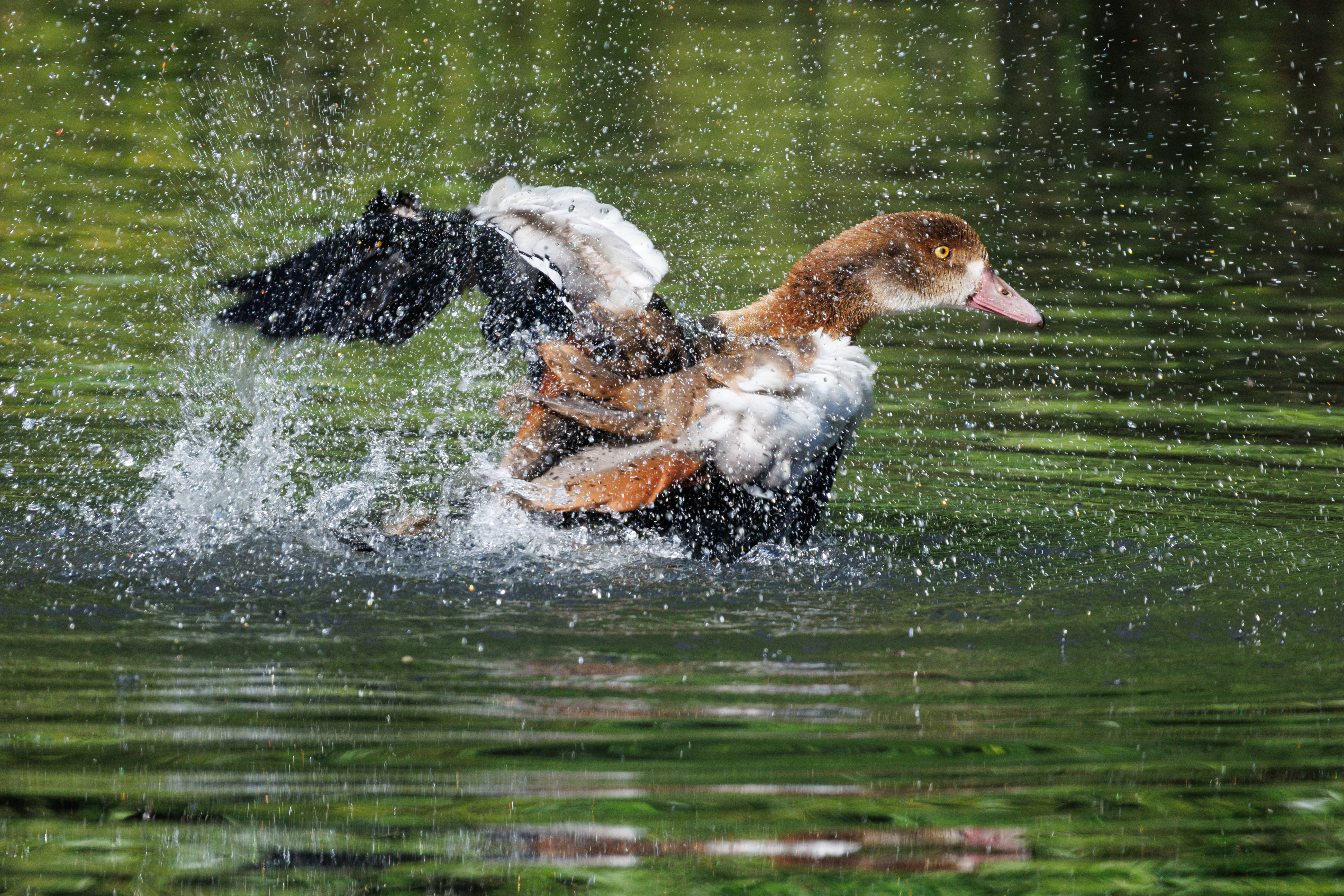
Battery life
When it comes to battery life, everything comes down to how you use it. If you shoot the occasional single frame using the mechanical shutter, chances are you’ll get something close to the 620-shot CIPA rating. But if instead you fire off lots of high-speed bursts using the electronic shutter, you’ll get many times more than that. In my experience, getting 10,000 shots from a single charge isn’t out of the question.

Just as with the EOS R5 and R6, Canon’s in-body image stabilisation works very well, especially in tandem with IS lenses. Using the RF 24-70mm f/2.8L IS USM, I found it’s possible to get sharp shots hand-held with shutter speeds as slow as 1 second, and even longer if you’re prepared to tolerate a little pixel-level blur.

Handholding telephoto lenses
At the other end of the scale, you can also hand-hold long telephotos confidently at slower shutter speeds than you might expect; I got perfectly usable images from the lightweight RF 600mm f/11 IS STM at 1/50sec. Of course, with this camera you’ll often be trying to keep shutter speeds high to avoid unwanted motion blur.
The EOS R3 is fully compatible with EF-mount SLR lenses via Canon’s Mount Adapter EF-EOS R. However, to get the most out of the camera, you’ll need to use Canon’s matched RF lenses. For more options have a look at the Best Canon RF mount lenses. In contrast, Sony E-mount users have access to a much wider range of lenses.

Colour rendition
When it comes to image quality, the EOS R3 barely puts a foot wrong. In typical Canon fashion, exposure and auto white balance are close to perfection, while the camera’s JPEG colour rendition is really attractive, too. This is important from a pro camera, as it means JPEG files can be sent to a news desk and used directly, with little need for any adjustments. Canon’s noise reduction is pretty effective as well, and I’d be quite happy shooting JPEGs at sensitivities as high as ISO 25,600.
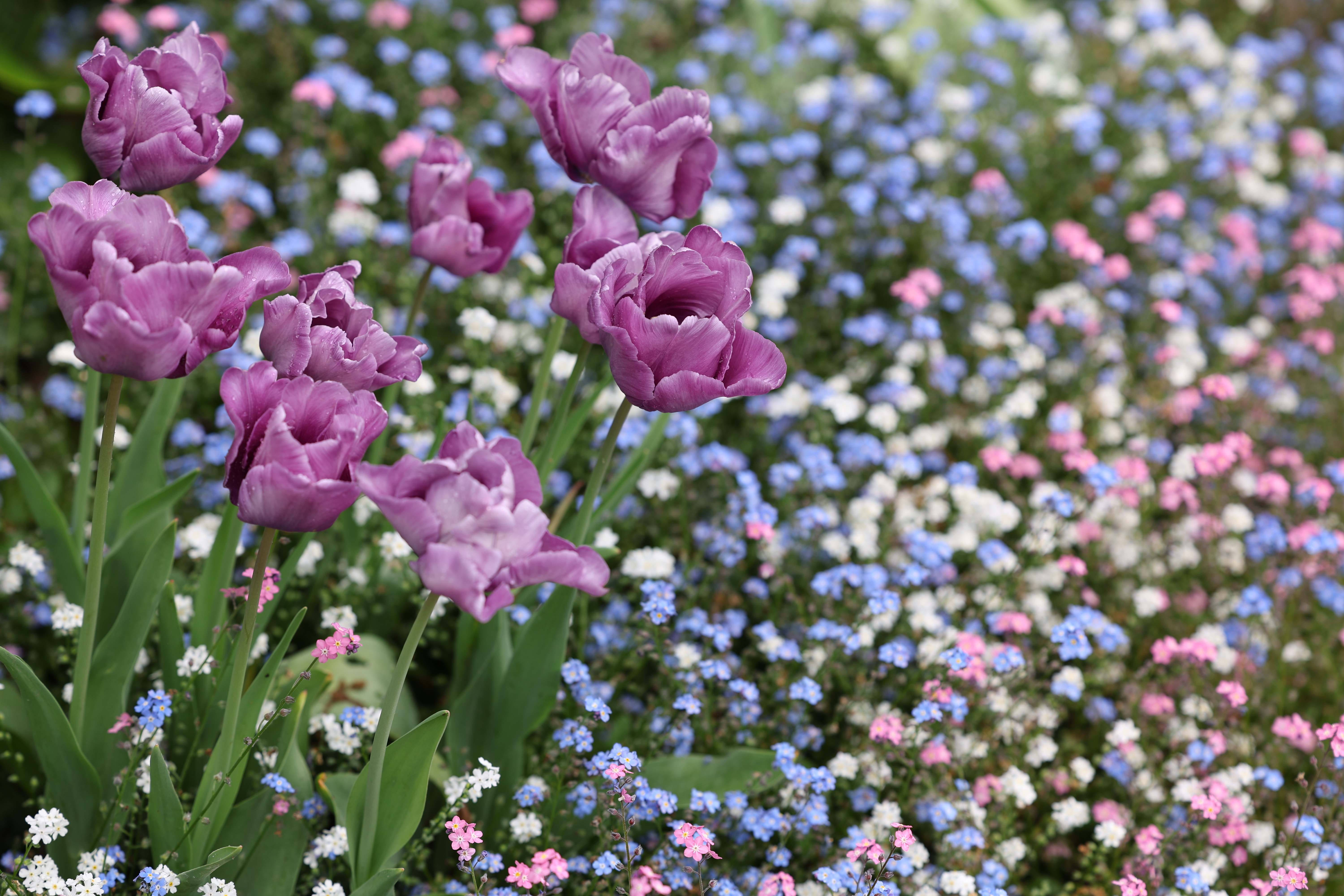
Dynamic range
Shooting raw brings more flexibility of course, particularly in terms of dynamic range. Not so long ago, high-speed cameras often lagged behind in this respect, but the EOS R3’s low-ISO raw files are extremely malleable. At ISO 100 you can push shadows by at least four stops before noise becomes at all problematic (of course, there’s not a lot you can do about highlights that are clipped to pure white). This doesn’t necessarily persist at higher ISOs, though; instead you can run into blotchy low-frequency colour noise in dark tones that’s difficult to suppress.

Adobe Camera Raw doesn’t do as good a job at suppressing high-ISO noise as Canon’s in-camera processing, although it is better at retaining detail. But you can get the best of both worlds using AI noise reduction software such as DxO PureRAW, which gives much better files in the ISO 6400-25,600 range, and perfectly passable results at ISO 51,200, maybe even a little higher.

Manageable file handling
This just leaves the thorny topic of resolution. At 24MP, the EOS R3 lags behind the its similarly priced peers pro-focused, the Nikon Z 9 and Sony Alpha 1. With this type of camera, in practice this generally translates into a reduced ability to crop into files while retaining good levels detail, for example when photographing distant animals. On the other hand, it does make file handling much more manageable. Some users may well prefer Canon’s approach.
ISO and Noise
While the EOS R3 may not offer as high a pixel count as some of its peers, it still delivers crisp, highly detailed files. There’s barely any visible noise or loss of detail at ISO 3200, and it’s only when you hike the sensitivity to ISO 12,800 that fine detail obviously starts to blur away. But I’d still be entirely happy shooting at ISO 25,600, while even ISO 51,200 isn’t out of the question when it’s necessary to get the shot. However, ISO 102,400 is decidedly ropey, and I’d avoid the extended ISO 204,800 setting, if at all possible.

Our Verdict
It’s tempting to compare the Canon EOS R3 to the Nikon Z 9 and Sony Alpha 1, and then dismiss it on the basis of its resolution. Why spend the best part of $4,499 / £5,049 on a 24MP camera, when you could get double the pixel count elsewhere? But judging a camera, and particularly a specialist one, by its resolution alone is like judging a car purely by its top speed. What you really need is enough to get the job done, at which point other attributes become equally, if not more important.
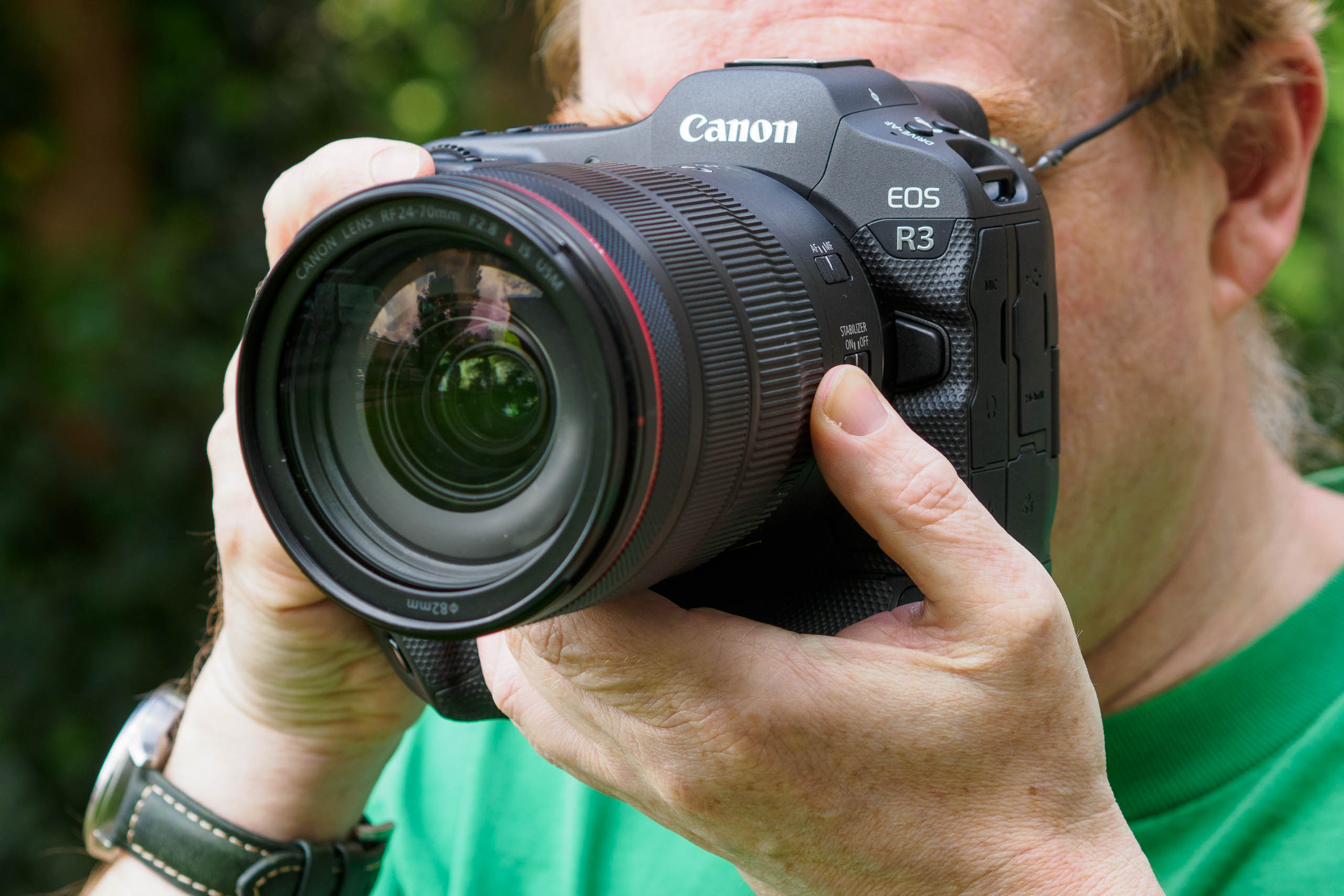
Which is a roundabout way of saying that, if 24MP is enough to get the job done, the Canon EOS R3 is an intoxicatingly brilliant camera to shoot with. It boasts one of the most sophisticated autofocus systems around, but makes it remarkably easy to use, allowing you to change settings quickly to suit the situation. There’s no doubting the value of eye control focus, especially now that it works together with subject detection. It’s a technology that I could never quite get to work properly on the 35mm film EOS 3, but with the EOS R3 it’s much more reliable, which makes it immeasurably more useful.

Final thoughts
It’s not just the autofocus system that’s impressive, either. This is a ludicrously fast camera that handles brilliantly and delivers excellent image quality, not only in raw, but also JPEG files direct from the camera. It’s something of a low-light demon too, giving perfectly usable results at very high ISO settings, while including excellent in-body stabilisation. As a result, it’ll nail the shot in conditions where other cameras would struggle.
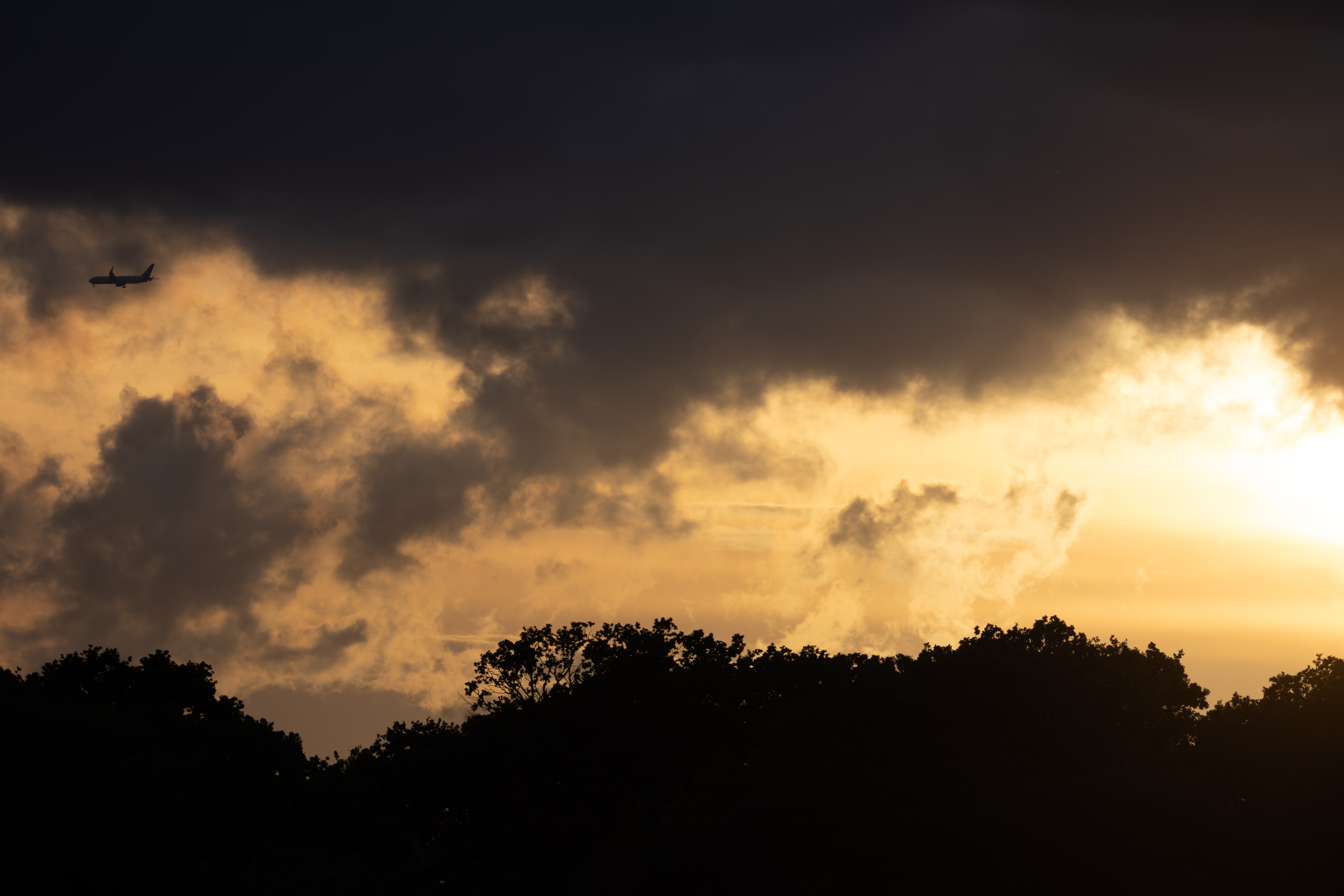
Of course, even for most enthusiast users the EOS R3 is overkill. You can buy the brilliant EOS R6 II for considerably less ($2,000 / £2,000), and spend the money saved on some very nice Canon RF mount lenses. But, for Canon users who demand the ultimate speed and autofocus performance, the EOS R3 is the camera to get.
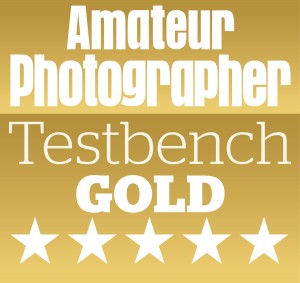
Find more great full-frame cameras in our guide to the best full-frame mirrorless cameras.
Related reading:
- Nikon Z9 Vs Canon EOS R3 Vs Sony Alpha 1
- Canon EOS R3 Vs Sony Alpha 1 and A9 II
- The Canon EOS R3 is a motorsports monster
Canon EOS R3: Full Specifications
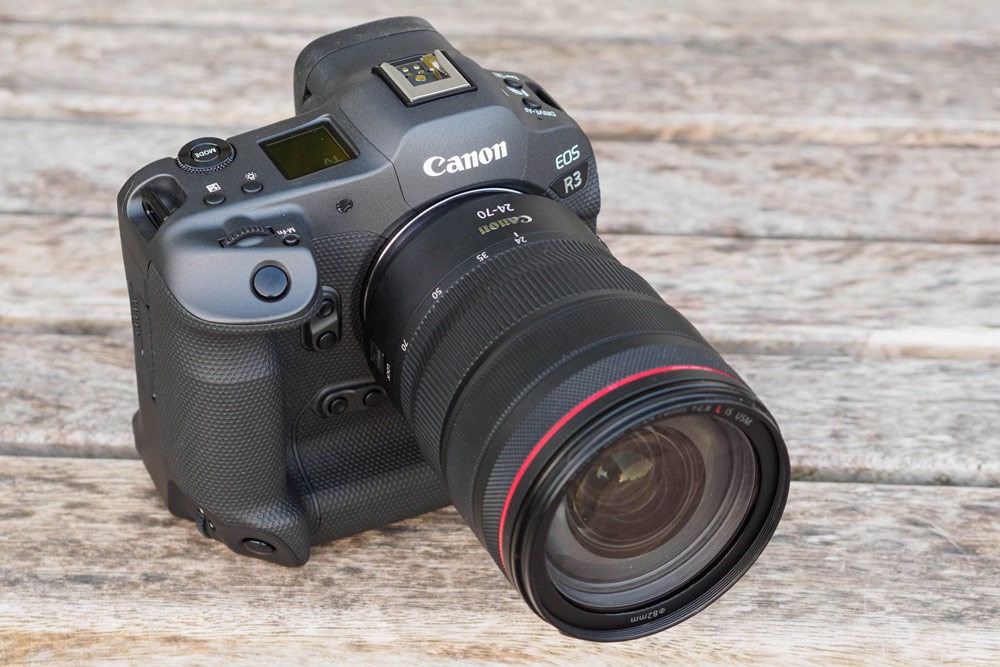
| Sensor | 24.1 MP Stacked full-frame |
| Output size | 6000×4000 |
| Lens mount | Canon RF / RF-S |
| Stabilisation | IBIS, 5-axis sensor-shift, up to 8.0 EV steps |
| Shutter speeds | 30-1/8000s (mechanical), 30-1/64000s (electronic) |
| Sensitivity | ISO 100 to ISO 102,400 (expands to ISO 204,800) |
| Exposure modes | PASM, B, Movie |
| Exposure comp | +/-3 EV (in 1/3 or 1/2 stop increments) |
| Metering | 8.2cm 4.2M fully articulated touchscreen |
| Continuous shooting | 30 fps, 195fps high-speed burst |
| Screen | 8.2cm 4.2M fully articulated touch screen |
| Viewfinder | Blackout-free 5.7M electronic, 100% coverage |
| AF points | 1053 |
| Video | 6K RAW 60p, 4K 120p, Full HD 240p |
| External connections | Headphone, Mic, micro HDMI, USB-C |
| Memory | CF Express (type B) and SD/SDHC/SDXC |
| Power | Li-ion Battery LP-E19 |
| Battery life | 860 shots |
| Dimensions | 150x 142.6 x 87.2mm |
| Weight | 822 g (1015g with card and battery) |
Follow AP on Facebook, Twitter, Instagram, YouTube and TikTok.





